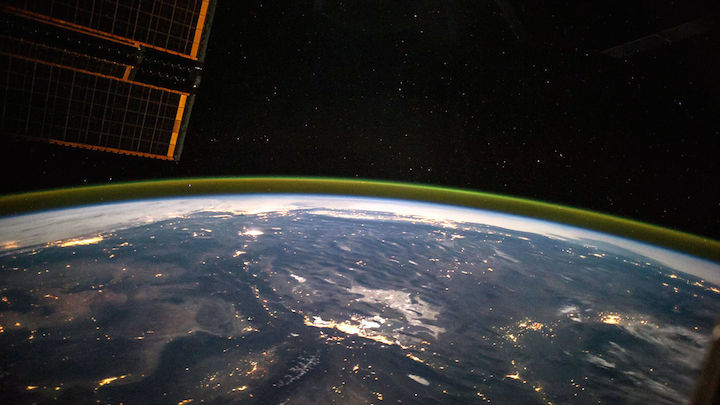22.06.2017

‘Bright night’ glowing sky mystery solved
On rare occasions, the nighttime sky at Earth’s temperate latitudes becomes bright enough, even on moonless nights, for people to read a book. These mysterious events— termed “bright nights” and reported for centuries—aren’t related to the glows of aurorae. Instead, a new study suggests, the phenomena occur when four types of slow-moving, high-altitude atmospheric waves merge over a small region and, in turn, temporarily drive a 10-fold-or-stronger brightening of an ever-present glow in the upper atmosphere (green layer in the image above). That airglow arises when individual gas atoms—previously created when ultraviolet light blasted gas molecules apart—later recombine, the researchers explain. Analyzing measurements of high-altitude airglow gathered by a satellite in 1992 and 1996 (years of maximum and minimum solar flare activity, respectively), the scientists found 11 cases where airglow, in theory, brightened enough to be seen by observers on the ground, they report in Geophysical Research Letters. Based on the team’s analyses, they estimate that the 10-fold-or-more magnification of airglow occurs somewhere on Earth on 7% of nights, with observers at any one spot able to see a bright night only once per year—and only then if conditions are just right. (Reports of “bright nights” have become very rare in recent times because of light pollution.) Although the team’s analyses probably won’t help regular stargazers, they could be used to help predict when enhanced airglow might interfere with the sensitive instruments used by many ground-based astronomers.
Quelle: AAAS
